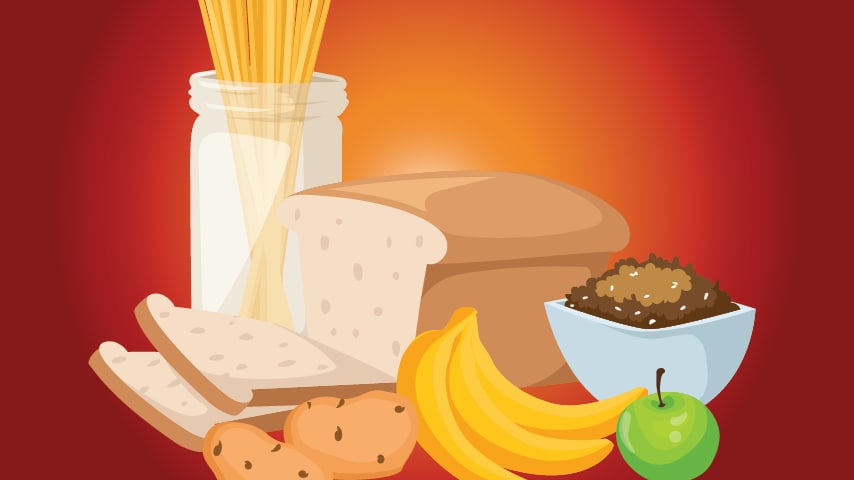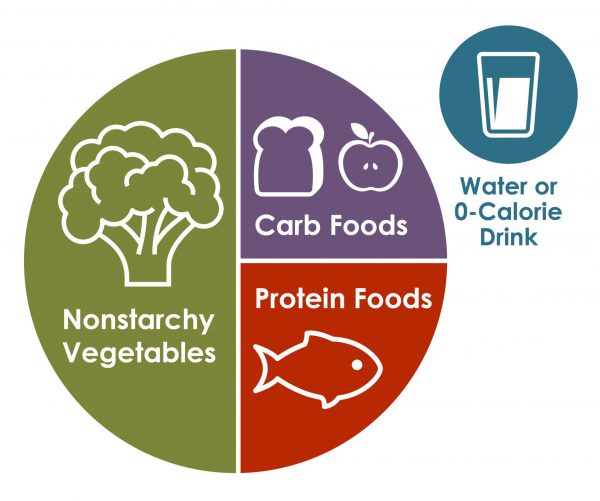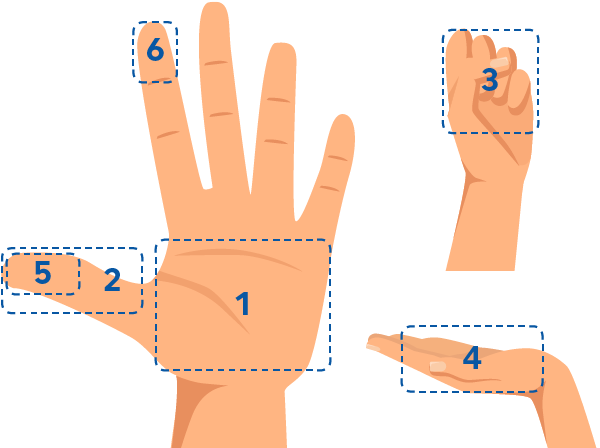Diabetes Meal Planning & Glycemic Index
Diabetes Meal Planning
A meal plan is your guide for when, what, and how much to eat to get the nutrition you need while keeping your blood sugar levels in your target range. A good meal plan will consider your goals, tastes, and lifestyle, as well as any medicines you’re taking.
A good meal plan will also:
- Include more non-starchy vegetables, such as broccoli, spinach, and green beans.
- Include fewer added sugars and refined grains, such as white bread, rice, and pasta with less than 2 grams of fiber per serving.
- Focus on whole foods instead of highly processed foods as much as possible.

Carbohydrates in the food you eat raise your blood sugar levels. How fast carbs raise your blood sugar depends on what the food is and what you eat with it. For example, drinking fruit juice raises blood sugar faster than eating whole fruit. Eating carbs with foods that have protein, fat, or fiber slows down how quickly your blood sugar rises.
For more information, see Carb Counting.
You’ll want to plan for regular, balanced meals to avoid high or low blood sugar levels. Eating about the same amount of carbs at each meal can be helpful. Counting carbs and using the plate method are two common tools that can make planning meals easier too.
Counting Carbs
Keeping track of how many carbs you eat and setting a limit for each meal can help keep your blood sugar levels in your target range. Work with your doctor or a registered dietitian to find out how many carbs you can eat each day and at each meal, and then refer to this list of common foods that contain carbs and serving sizes. For more information, see Carb Counting.
Keeping track of how many carbs you eat and setting a limit for each meal can help keep your blood sugar levels in your target range. Work with your doctor or a registered dietitian to find out how many carbs you can eat each day and at each meal, and then refer to this list of common foods that contain carbs and serving sizes. For more information, see Carb Counting.
The Plate Method

It’s easy to eat more food than you need without realizing it. The plate method is a simple, visual way to make sure you get enough nonstarchy vegetables and lean protein while limiting the amount of higher-carb foods you eat that have the highest impact on your blood sugar.
Start with a 9-inch dinner plate (about the length of a business envelope):
- Fill half with non-starchy vegetables, such as salad, green beans, broccoli, cauliflower, cabbage, and carrots.
- Fill one quarter with a lean protein, such as chicken, turkey, beans, tofu, or eggs.
- Fill one quarter with carb foods. Foods that are higher in carbs include grains, starchy vegetables (such as potatoes and peas), rice, pasta, beans, fruit, and yogurt. A cup of milk also counts as a carb food.
Then choose water or a low-calorie drink such as unsweetened iced tea to go with your meal.

It’s easy to eat more food than you need without realizing it. The plate method is a simple, visual way to make sure you get enough nonstarchy vegetables and lean protein while limiting the amount of higher-carb foods you eat that have the highest impact on your blood sugar.
Start with a 9-inch dinner plate (about the length of a business envelope):
- Fill half with non-starchy vegetables, such as salad, green beans, broccoli, cauliflower, cabbage, and carrots.
- Fill one quarter with a lean protein, such as chicken, turkey, beans, tofu, or eggs.
- Fill one quarter with carb foods. Foods that are higher in carbs include grains, starchy vegetables (such as potatoes and peas), rice, pasta, beans, fruit, and yogurt. A cup of milk also counts as a carb food.
Then choose water or a low-calorie drink such as unsweetened iced tea to go with your meal.
About Portion Size
Portion size and serving size aren’t always the same. A portion is the amount of food you choose to eat at one time, while a serving is a specific amount of food, such as one slice of bread or 8 ounces (1 cup) of milk.
These days, portions at restaurants are quite a bit larger than they were several years ago. One entrée can equal 3 or 4 servings! Studies show that people tend to eat more when they’re served more food, so getting portions under control is really important for managing weight and blood sugar.
If you’re eating out, have half of your meal wrapped up to go so you can enjoy it later. At home, measure out snacks; don’t eat straight from the bag or box. At dinnertime, reduce the temptation to go back for seconds by keeping the serving bowls out of reach. And with this “handy” guide, you’ll always have a way to estimate portion size at your fingertips:
Portion size and serving size aren’t always the same. A portion is the amount of food you choose to eat at one time, while a serving is a specific amount of food, such as one slice of bread or 8 ounces (1 cup) of milk.
These days, portions at restaurants are quite a bit larger than they were several years ago. One entrée can equal 3 or 4 servings! Studies show that people tend to eat more when they’re served more food, so getting portions under control is really important for managing weight and blood sugar.
If you’re eating out, have half of your meal wrapped up to go so you can enjoy it later. At home, measure out snacks; don’t eat straight from the bag or box. At dinnertime, reduce the temptation to go back for seconds by keeping the serving bowls out of reach. And with this “handy” guide, you’ll always have a way to estimate portion size at your fingertips:
Get Help
Planning meals that fit your health needs, tastes, budget, and schedule can be complicated. Ask your doctor to refer you to diabetes self-management education and support (DSMES) services, where you’ll work with a diabetes educator to create a healthy meal plan just for you. You can also visit the Find a Diabetes Education Program in Your Area locator for DSMES services near you.
For more information:
https://www.cdc.gov/diabetes/managing/eat-well/meal-plan-method.html
Planning meals that fit your health needs, tastes, budget, and schedule can be complicated. Ask your doctor to refer you to diabetes self-management education and support (DSMES) services, where you’ll work with a diabetes educator to create a healthy meal plan just for you. You can also visit the Find a Diabetes Education Program in Your Area locator for DSMES services near you.
For more information:
https://www.cdc.gov/diabetes/managing/eat-well/meal-plan-method.html
Glycemic Index
The glycemic index is a tool that’s often used to promote better blood sugar management.
Several factors influence the glycemic index of a food, including its nutrient composition, cooking method, ripeness, and the amount of processing it has undergone.
The glycemic index can not only help increase your awareness of what you’re putting on your plate but also enhance weight loss, decrease your blood sugar levels, and reduce your cholesterol.
Glycemic Index: What it is and how to use it:
https://www.healthline.com/nutrition/glycemic-index#gi-of-foods
How to use the Glycemic Index:
https://www.webmd.com/diabetes/guide/glycemic-index-good-versus-bad-carbs
Search for Glycemic Index Value:
http://www.glycemicindex.com/foodSearch.php
The lowdown on glycemic index and glycemic load: Understanding glycemic load is just as important as the glycemic index of foods:

